Bahías bioluminiscentes puerto rico: Mosquito Bay “Bioluminescent Bay”, Vieques, Puerto Rico
Bioluminescent Bays Shine Light on Puerto Rico’s Resilience | NOVA
Para leer este articulo en Español, haz clic aqui.
“Ay, que rico,” whispers Leonor Alicea. “Oh, so delicious.”
Alicea isn’t drinking guava juice or eating crunchy tostones. In Puerto Rico, the phrase is not necessarily related to taste—it implies the sensation of sweetness, or the loveliness of a sight. Instead, she’s relishing the essence of a mangrove tree.
“This is just…” Her words hang in the heavy, damp air as she pats the trunk of the tree, leaving me to infer her reverence for this place, Cabezas de San Juan, a nature reserve home to mangrove trees, a coral reef, and a bioluminescent lagoon. Alicea, a marine biologist and environmental interpreter for the nonprofit organization Para La Naturaleza (which translates to “For Nature”), teaches visitors about the reserve’s history and significance.
The view of Laguna Grande from the lighthouse at Cabezas de San Juan, a nature reserve in Puerto Rico near San Juan.
Especially after Hurricane Maria, which struck Puerto Rico on September 20, 2017, Alicea is on a mission to educate people from all walks of life about the value of listening to nature. “Nature is trying to teach us how to survive,” she says. “Nature is talking, and sometimes we don’t hear it.”
“The mangroves are fighters for us,” she says with a hint of drama as we walk through the reserve. She’s alluding to mangroves’ survival skills. These small shrubs manage to thrive in muddy, salty conditions thanks to a filtration system that keeps out the salt, as well as a root system that holds the mangrove upright—this environment would kill most other plants. Moreover, mangroves’ bud-like “propagules,” which they drop into the water, can float solo for up to a whole year, still viable, looking for their optimal new home. Once they settle, they’ll grow into new mangroves.
But mangroves aren’t just fighters for themselves—they’re fighters for the whole ecosystem. Red mangroves sprout a tangle of roots that release bacteria into the water, providing a critical vitamin to a species of dinoflagellate (Pyrodinium bahamense): a single-celled aquatic phytoplankton that, when agitated, produces resplendent bioluminescence—light produced by chemical reactions in the bodies of living things—in the adjacent lagoon.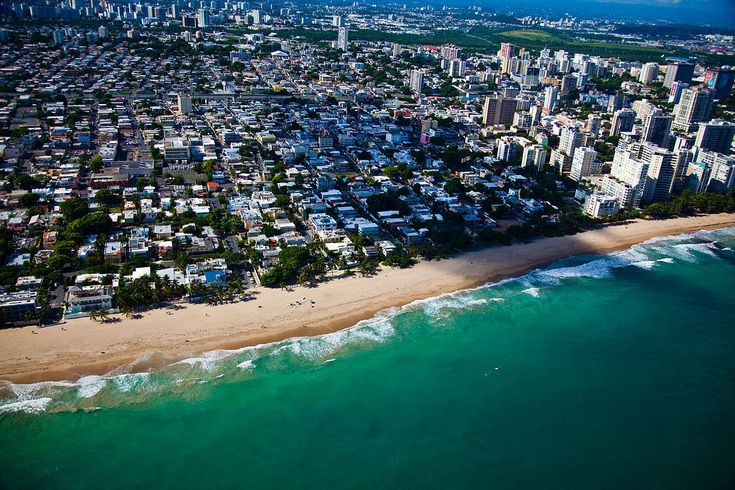 Dinoflagellates are tiny: 200 to 300 of them could rest atop the head of a pin. The presence of billions of them creates the blue-green glow that you see when you swish your hand through the water.
Dinoflagellates are tiny: 200 to 300 of them could rest atop the head of a pin. The presence of billions of them creates the blue-green glow that you see when you swish your hand through the water.
In the Caribbean, there are a few such bioluminescent bays or lagoons that glow year-round: three in Puerto Rico, one in St. Croix, one in Jamaica, and one in the Cayman Islands. That this combination of unlikely, astounding factors comes together to create a perennial nursery for a diverse community—fish, mollusks, birds, insects, reptiles, and more—is remarkable. Bioluminescent bays are vastly understudied, says Michael Latz, a research biologist at the University of California, San Diego’s Scripps Institution of Oceanography. But they shouldn’t be.
“They’re excellent natural laboratories to look at ecosystem competition, the effect of nutrients, and the impact of environmental conditions,” he says. “Why are they so successful? It’s a scientific mystery. We don’t have the full answer.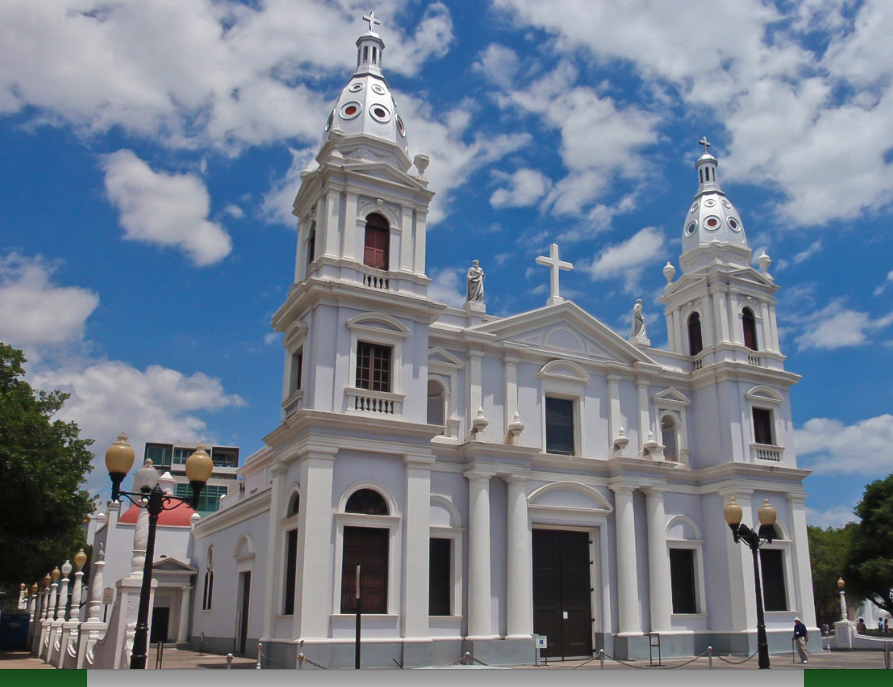 ”
”
Embedded in the mystery of bioluminescent bays is their extraordinary resilience. Hurricane Maria tore through both Laguna Grande (the bioluminescent lagoon at Cabezas de San Juan) and Mosquito Bay, on the nearby little island of Vieques. But nature varies in its resilience, as people do—as such, Mosquito Bay and Laguna Grande responded differently to Hurricane Maria.
For the famed and touristy Mosquito Bay, named after a legendary pirate ship, “El Mosquito,” Maria was devastating. The heavy wind and rain pushed water out of the bay, lowered the salinity of the water (an unfavorable change for P. bahamense), and decimated the mangroves surrounding the bay. Then, the water went dark. It was as though this tiny ecosystem, like the island, was experiencing its own blackout.
Today, the small island of Vieques is still reeling from year-old wounds, its residents worn and weary despite living in what might seem like paradise. But their bay’s bioluminescence is slowly recovering, arguably more quickly than the island’s electrical system. One year later, it may even be in a better state now than it was before the storm. Meanwhile, Laguna Grande isn’t glowing much at all.
One year later, it may even be in a better state now than it was before the storm. Meanwhile, Laguna Grande isn’t glowing much at all.
What do these strange and beautiful phenomena have to teach us about the dynamics of tropical ecosystems, and just how resilient are they? Scientists are still on the hunt for answers, but one thing’s certain: It’s hardship that brings to life nature’s capacity to repair and renew.
“Welcome to the window of my office.”
At the highest point of Cabezas de San Juan sits the oldest lighthouse in Puerto Rico. At 132 years old, it’s even older than the lighthouse atop Old San Juan’s popular historic fortress, El Morro.
The lighthouse at Cabezas de San Juan, which stands 210 feet above sea level, has a generator. So after Maria hit, Alicea and her colleagues moved their offices there to direct community efforts—including distribution of supplies like diapers, wipes, and toothpaste to 30 communities. The community work wasn’t a one-time thing: Cabezas de San Juan still checks up on these neighborhoods every three to four months to see how they’re doing. The activities that collectively take place atop this gorgeous sanctuary make the lighthouse a sort of headquarters for all that Cabezas de San Juan represents.
The activities that collectively take place atop this gorgeous sanctuary make the lighthouse a sort of headquarters for all that Cabezas de San Juan represents.
“The office is the reserve,” Alicea tells me. “The lighthouse is my window.”
She displays equal parts sass and tenderness as she shows us around. “C’mon, we’ve got company. Behave yourselves!” she snaps at a pair of fighting roosters outside the lighthouse; just a few minutes later, she is waxing poetic about the value of the reserve’s lagoon.
“The lagoon is a fresh book to read,” she says. “Sometimes you can have bioluminescence when the conditions are not supposed to be good for it. And sometimes you have the good conditions but you don’t have bioluminescence.” Biologists hope to figure out how and why these anomalies occur.
Alicea walks through the mangrove swamp at Laguna Grande.
Alicea herself was drawn to marine biology through storytelling. She recalls seeing a book when she was 12 that depicted a “monster” (really it was a manta ray) hanging out near a mangrove forest. Later in her childhood, she watched a TV show called “Man from Atlantis,” which featured a female marine biologist as one of its protagonists. Alicea fell in love with the idea of giving back to nature the riches she had received. “Nature is always giving, and we are always taking,” she says. “Sometimes we don’t think about how we can pay back nature for all the things it gives us.”
Later in her childhood, she watched a TV show called “Man from Atlantis,” which featured a female marine biologist as one of its protagonists. Alicea fell in love with the idea of giving back to nature the riches she had received. “Nature is always giving, and we are always taking,” she says. “Sometimes we don’t think about how we can pay back nature for all the things it gives us.”
Alicea says that Laguna Grande has about the same number of dinoflagellates floating through its waters now as it did last year before the hurricane, most of the mangroves have bounced back, and the conditions are stable—but the bioluminescence just isn’t the same. “We don’t know why it’s not glowing.”
But Alicea isn’t worried. “It’s an opportunity to learn,” she says. “It’s a kind of shock therapy—sometimes we need this shock to react and then take action.”
Juan González Lagoa, a professor emeritus at University of Puerto Rico, Mayagüez and the “father of bioluminescence,” says that Puerto Rico is in the process of establishing a unified conservation plan for all three bioluminescent bays.
“Bioluminescent bays are very sensitive,” Lagoa says. “We have to take good care.”
“It’s a beautiful night in Puerto Mosquito.”
While Aristotle was the first to describe bioluminescence in writing, it wasn’t until the late 19th century that the term came into widespread use. And it wasn’t until the mid-20th century that Johns Hopkins University scientists like W.D. McElroy, William Biggley, and Howard Seliger (among others) identified an exact ecosystem model for the formation of bioluminescent phytoplankton blooms in coastal waters. (Seliger, in particular, had been obsessed with light and fireflies since childhood; later in his career, he devised experiments related to color and human memory alongside his work on bioluminescence.)
Their model elucidated the mechanics of just one particular bay—Phosphorescent Bay at Puerto Rico’s La Parguera nature reserve—but scientists agree that in general, there’s a special recipe for making an environment hospitable to glowing dinoflagellates.
First, you need a mangrove forest, the right amount of salt water, a semi-protected area of water, and a particular type of current that “traps” the dinoflagellates. On top of that, some bioluminescent bays have other distinguishing characteristics. For example, what makes Laguna Grande special is that it’s partially protected by the reserve’s coral reef, which acts as a kind of breakwater. That’s what makes it a lagoon as opposed to a bay. Jamaica’s bioluminescent bay is unusual because a fresh water river flows into it. The water in the bay is stratified as a result, with fresh water on top and saltier ocean water underneath it. The dinoflagellates simply avoid the upper, freshwater layer. For each bay, a sudden change in rainfall, salinity, temperature, wind speed, or wind direction could turn out the lights.
“That’s one of the things about bioluminescent bays that is incredible—how many things have to be in sync,” says Mark Martin-Bras, the director of research for the Vieques Conservation and Historical Trust. “If you have the right shape and the right size and the right flow, it just does its magic.”
“If you have the right shape and the right size and the right flow, it just does its magic.”
He uses the word “magic” for a reason—there’s long been superstition related to bioluminescence, which “was one of the world’s special effects,” Martin-Bras says. “Some people considered it evil, as they couldn’t understand it. If you put your hands in the water, look—your hand just becomes a wizard’s hand.” Out on Mosquito Bay with Martin-Bras, I lean over the edge of the small boat and dip my hands into the dark, velvety depths. The dinoflagellates’ blue-green glimmers emerge in a stunning dance that mirrors the night sky as the bay breeze envelops us. The feeling is both serene and otherworldly—bewitching, even.
On the island of Vieques, the absence of light pollution post-Maria gave conservationists like Martin a chance to capture bioluminescence in the bay more readily. He and his colleagues want to introduce covered amber lights that will replace other downed sources of light, and that will be angled away from the bay, from sea turtle areas, and other sensitive regions of nocturnal flora and fauna.
“People come to the bioluminescent bay and they’re like, ‘Oh, this is beautiful, but the sky is beautiful, too…I don’t know where to look,’” Martin-Bras says. “It’s a combination that gives [you] a better perspective of the world and the universe—from the microscopic to the universal.”
Martin-Bras recalls feeling similarly when he was eight and his father and uncle took him to see the bay. “It was magic,” he says.
Now, as research director on the island, Martin-Bras is focused on jotting down his observations and taking detailed samples of the water to determine temperature, salinity, turbidity, pH, and more. Over the course of an hour or so, he takes us to a several locations in the bay, including a real-time monitoring station equipped with telemetry that the United States Geological Survey installed in 2014. The 90-milliliter samples at each site are mixed with formaldehyde, which kills and preserves the phytoplankton so that Martin-Bras and his teammates can count them—as well as compare various aspects of water quality to other time periods.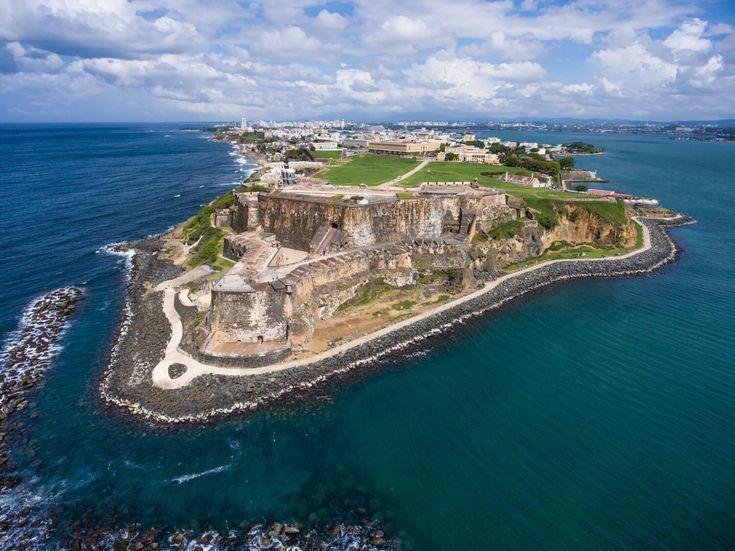
The behavior and size of phytoplankton blooms can tell scientists a lot about the condition of an ecosystem. For example, a bloom of toxic phytoplankton near a chicken farm might suggest there is some anthropogenic (human-caused) activity at bay. Or unusual amounts of phytoplankton could help us understand the relationship between ocean acidification and biodiversity.
The prevailing characteristic of year-round bioluminescence in coastal bays is that one species of dinoflagellate, P. bahamense, dominates. Ecologically, Latz says, this is very unusual—and it’s a rule that holds true even after large-scale disturbances like hurricanes.
If storms become stronger, that could push bioluminescent bays past a tipping point.
After storm events, biologists and conservationists see an increase in phytoplankton communities based on observed chlorophyll levels. But that increase is due to the sudden proliferation of other phytoplankton and a simultaneous decrease in P. bahamense. Later, the system restores itself to equilibrium—to typical conditions in which it’s dominated by P. bahamense.
bahamense. Later, the system restores itself to equilibrium—to typical conditions in which it’s dominated by P. bahamense.
“It’s incredibly interesting that this single-celled, extremely delicate microscopic plankton is able to dominate at incredible levels and stay that way,” Martin-Bras says. Scientists don’t yet know why P. bahamense is so paramount, nor why faster-growing phytoplankton don’t out-compete it.
If there’s an increase in frequency of storms, though, or if storms become stronger—factors that could be influenced by climate change—that might push the P. bahamense-dominated stable community past a tipping point.
“Then you may have a regime shift where other organisms become dominant and then it doesn’t restore itself,” Latz says. Scientists don’t yet know what the tipping point is for bioluminescent bays; to know the answer would mean witnessing the difference between light and dark—between resilience and death.
On this particular night in Mosquito Bay, at first, the light show is a bit more modest. Hurricane Beryl, which deteriorated into a tropical storm, had just passed through.
Hurricane Beryl, which deteriorated into a tropical storm, had just passed through.
But just before we reach the monitoring station, the boat slows and the operator, Carlos, turns off the engine. Crests of radiant bluish silver surround us and the shadows of tarpon fish glide beneath the water’s surface. “When the wind blows, you are able to see what would be foam or movement transform into blue magic,” Martin-Bras says. He notes that there are probably something like 75,000 dinoflagellates per liter in the water at this moment. Despite Beryl, this corner of the bay is glowing incredibly.
Receive emails about upcoming NOVA programs and related content, as well as featured reporting about current events through a science lens.
Zip Code
“We have to learn from nature.”
As it becomes clearer that bioluminescent bays could be beacons of light for researchers, many are lobbying for more detailed studies of how severe storms affect them.
Latz and his colleagues have unpublished results showing the importance of wind speed and direction as an environmental factor affecting bioluminescent bays; further studies will address the impact of Hurricane Maria, as well. One of the studies looked at Mosquito Bay over four months and determined that during storm events, if the wind shifted radically, then the bay saw changes in dinoflagellate populations—and, in turn, bioluminescence. In addition, this change was reversible within a week. In general, too, “wind can generate turbulence, which is known to affect population growth because it interferes with the process of cell division,” Latz says.
One of the studies looked at Mosquito Bay over four months and determined that during storm events, if the wind shifted radically, then the bay saw changes in dinoflagellate populations—and, in turn, bioluminescence. In addition, this change was reversible within a week. In general, too, “wind can generate turbulence, which is known to affect population growth because it interferes with the process of cell division,” Latz says.
On the island of St. Croix (part of the U.S. Virgin Islands), there’s another bioluminescent bay that Latz studied. It’s called Salt River Bay, and it was formed after a failed hotel complex project was abandoned 60 years ago; in the intervening decades, what remained of the artificial marina transformed into a bioluminescent bay. In a six-month study at this bay, Latz’s team found that wind speed was an important factor in regulating bioluminescence. Currently, Salt River Bay is doing well—Maria actually washed sediment out of its clogged entrance, which gave the bioluminescence a boost. Sargassum, as it turns out, also impairs bioluminescence—and Laguna Grande has been dealing with a perplexing sargassum situation.
Sargassum, as it turns out, also impairs bioluminescence—and Laguna Grande has been dealing with a perplexing sargassum situation.
“Mangrove swamps are kind of like immortal forests,” Alicea says as she guides us through the reserve. “They are used to hurricanes.”
Although it’s hard to uncouple these factors from other measurements like salinity and rainfall, the studies do signify a step in the right direction.
Rising sea levels pose a threat that conservation efforts may not be able to solve. Lagoa notes that in Vieques, Mosquito Bay sits side-by-side with Ferro Bay, a deep bay with a very strong pattern of circulation. “With a rise in sea levels, we may see them connect eventually,” Lagoa says. If that happens, Lagoa says the pattern of circulation in the bay will change and “that will be the end of it. That I know.”
In some ways, the response of bioluminescent bays to Hurricane Maria shows us that the climate change problem is not just one of warming temperatures—it’s a problem of nonlinearity, a problem of refereeing when the direction of things is unclear but beauty is stable, unwavering.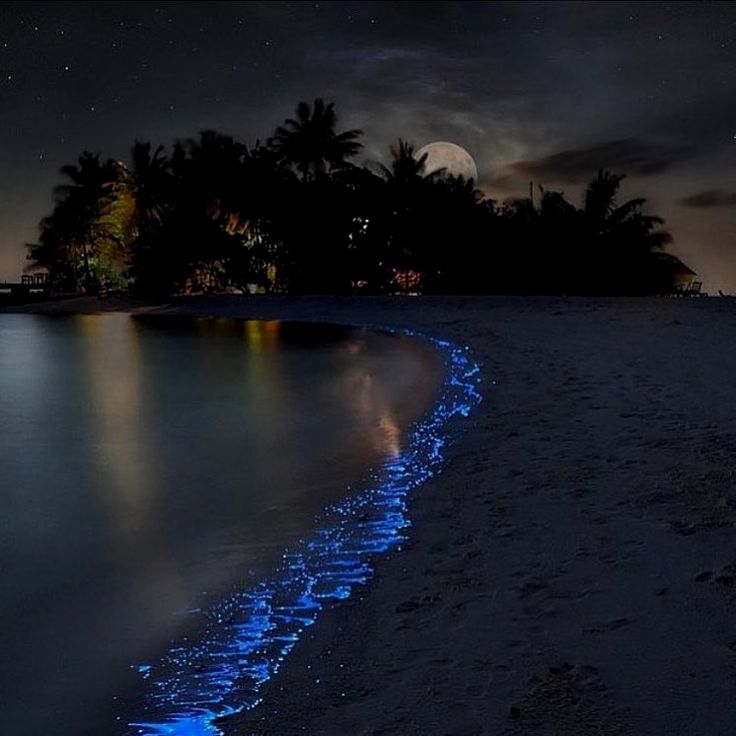 How do we come together as a team to maintain a home that is always changing—that always needs repairs—when we’re fractured and broken ourselves?
How do we come together as a team to maintain a home that is always changing—that always needs repairs—when we’re fractured and broken ourselves?
“That’s the hand we’ve been dealt,” Martin-Bras sighs, looking over the twinkling bay. “That you can go through life without being a nature person. That you could sacrifice this.” He pauses. “Instead of adjusting to life, I saw that we were just trampling through it.”
Back at Laguna Grande, Alicea agrees. “People forget to live with nature, and not far from it,” she says. “If we destroy just one thing in this spot, we are going to have consequences on the other side of the island. Everything is connected.”
Photo credits: Michael Rivera, Phil Hart / CC BY-NC-SA 4.0
Guide to Bioluminescent Bays in Puerto Rico
Drifting through a sparkling ocean, witnessing the rare, natural light show known as bioluminescence is an unforgettable experience.
There are just five bioluminescent bays in the world and Puerto Rico is home to three—Vieques, Laguna Grande and La Parguera. The other two are Jamaica’s Luminous Lagoon and Halong Bay in Vietnam. Snorkeling and kayaking excursions to a bio bay provide exhilarating close encounters with this rare biochemical emission of light. Each ripple caused by either the oar, the gentle flap of a nearby fish or a hand skimming the water ignites magical fluorescent-blue sparkles below the surface. Choosing which bay to visit depends on how much time you have, the type of experience you are looking for, price and accessibility.
The other two are Jamaica’s Luminous Lagoon and Halong Bay in Vietnam. Snorkeling and kayaking excursions to a bio bay provide exhilarating close encounters with this rare biochemical emission of light. Each ripple caused by either the oar, the gentle flap of a nearby fish or a hand skimming the water ignites magical fluorescent-blue sparkles below the surface. Choosing which bay to visit depends on how much time you have, the type of experience you are looking for, price and accessibility.
Photo Source: Fajardo Bio Bay / Discover Puerto Rico
What is bioluminescence?
This ethereal phenomenon occurs in tropical locations when billions of microorganisms called dinoflagellates (a type of plankton) are concentrated in one place, giving the water an almost psychedelic bright, blue-green glow. Bioluminescence is more commonplace than you might think—fireflies are the obvious example. Many species can control the intensity and color of the light they emit. In Puerto Rico’s bio bays, the dinoflagellate response is purely reactive. When the organisms are disturbed by subtle movements in the water, a protein and an enzyme—luciferin and luciferase—combine and create energy. Scientists speculate that dinoflagellates developed this trait to ward off or evade predators and for communication.
When the organisms are disturbed by subtle movements in the water, a protein and an enzyme—luciferin and luciferase—combine and create energy. Scientists speculate that dinoflagellates developed this trait to ward off or evade predators and for communication.
How can I experience a bio bay in Puerto Rico?
To access Puerto Rico’s bio bays via kayak or paddleboard, you’ll need to paddle through dark mangrove channels—we recommend that you sign up with a recommended tour operator. Most tour companies operate two tours each night, at sunset and 9pm. Tandem kayaks—the most common vessel—allow for a unique family-friendly experience; most operators specify a minimum age of six years to participate. Kayaks are generally towed out to the lagoon. The channels are protected by outer reefs and mangroves so you can expect calm conditions with no currents. Regardless of which bio bay you choose, always try to schedule your tour on a cloudy, moonless night to allow for ideal viewing.
Note that there are no bio bay tours the day before, of and after the full moon.
Photo Source: Fajardo Bio Bay / Omark Reyes / Discover Puerto Rico
Vieques Bioluminescent Mosquito Bay
The protected wildlife reserve of Bahía Mosquito is located on Vieques, an island municipality just a 40-minute ferry ride from Ceiba, or a short flight from San Juan. Famed for its picture-perfect crescents of sand, boutique hotels and crystalline waters, Vieques fulfills every classic Caribbean fantasy.
Boasting the highest concentration of phosphorescent dinoflagellates, Mosquito Bay is universally hailed as the brightest of the world’s five bio bays. It’s also Puerto Rico’s most logistically challenging—you’ll need to secure reservations well in advance and stay overnight on the island; but that’s certainly no hardship. Kayaking through the bay under star-studded skies is a mesmerizing experience. Most tours leave from Esperanza, on the south of the island, a 15-minute drive from the airport. It’s the island’s laid back tourist hub with a handful of restaurants, bars and outfitters dotting the oceanfront Malecón. As Mosquito Bay forms part of the Sun Bay Nature Reserve, swimming here is not permitted and the bay is only open to licensed tour companies with permits, not individuals.
As Mosquito Bay forms part of the Sun Bay Nature Reserve, swimming here is not permitted and the bay is only open to licensed tour companies with permits, not individuals.
Getting to Vieques
By Plane
There are several flights a day from San Juan international Airport (SJU) with Cape Air and Vieques Air Link. Flights start at $110 one way; airtime is around 30 minutes. From San Juan’s Isla Grande Airport (SIG), 10 minutes from downtown San Juan, there are flights with Cape Air, Air Flamenco and Vieques Air Link. One-way tickets cost from $72 each way; airtime around 17 minutes. There are also daily flights from Ceiba Airport with Vieques Air Link, from $40 (7-min. flight time)
By Ferry
The less convenient alternative is a 45-minute public ferry ride (less than $5) from Ceiba, a 90-minute drive from San Juan (taxi fare around $170). The ferry schedules are notoriously erratic. Always try to reserve a seat on the earliest ferry—getting bumped isn’t unusual.
Getting around Vieques
Car Rental
Hiring a car is the best way to explore the island. Vieques’ interior is wild and rugged, so a 4-wheel drive vehicle is recommended. Demand for rental cars frequently outstrips supply—driving higher prices. Expect to pay around $100 per day for a Jeep (or equivalent), around $70 per day for a golf cart. Be sure to make a reservation well ahead of time. There are several rental companies at the airport: Vieques Car Rental, Avis and Coqui Car Rental. If you decide not to rent a car, it’s best to stay in Esperanza, the tourist epicenter.
Taxi
The two main services on Vieques are Vieques Taxi (787-741-8294) and Mode’s transportation services (787-295-3021).
Publicos
You’ll find publicos waiting at Vieques’ ferry terminal and airport as well as in the towns of Isabel Segunda and Esperanza. Publicos operate on fixed routes, fares can range from $3–$5 per person.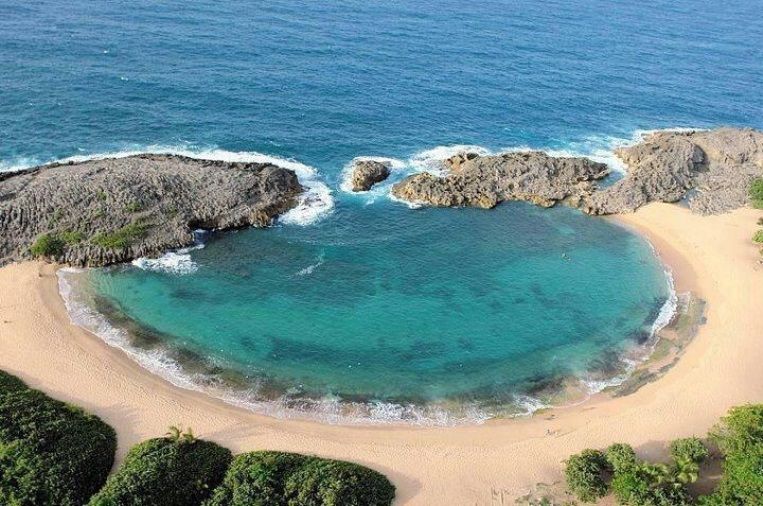 A shared ride will lower the cost further.
A shared ride will lower the cost further.
Recommended Tour Operators
Jak Watersports
One of Vieques’ leading outfitters, Jak’s small group tours use clear, tandem canoes which enhance the experience by illuminating as you cruise through the bay. Paddle boards, motorboats and regular kayak excursions are also offered. Jak’s is known for its professional, knowledgeable guides. Two-hour tours ($60) leave from the docks in Esperanza at sunset and 9pm.
Abe’s Snorkeling & Bio Bay Tours
Two-hour excursions in tandem kayaks depart at 7pm nightly ($60 adults, $45 kids aged 4-11). A family-run outfit, Abe’s offers flexible booking, experienced guides and a family-friendly focus. The All-in-One (snorkeling and bio bay tour) is the most popular option.
Vieques Kayak Bio Bay
Small group, 90-minute bio bay excursions in clear and semi-clear kayaks depart nightly from Esperanza at 7pm and 9pm (price $50).
La Parguera Bioluminescent Bay
The rustic fishing village of La Parguera lies 126km (78 miles) southwest of San Juan and 42km (26 miles) west of Ponce.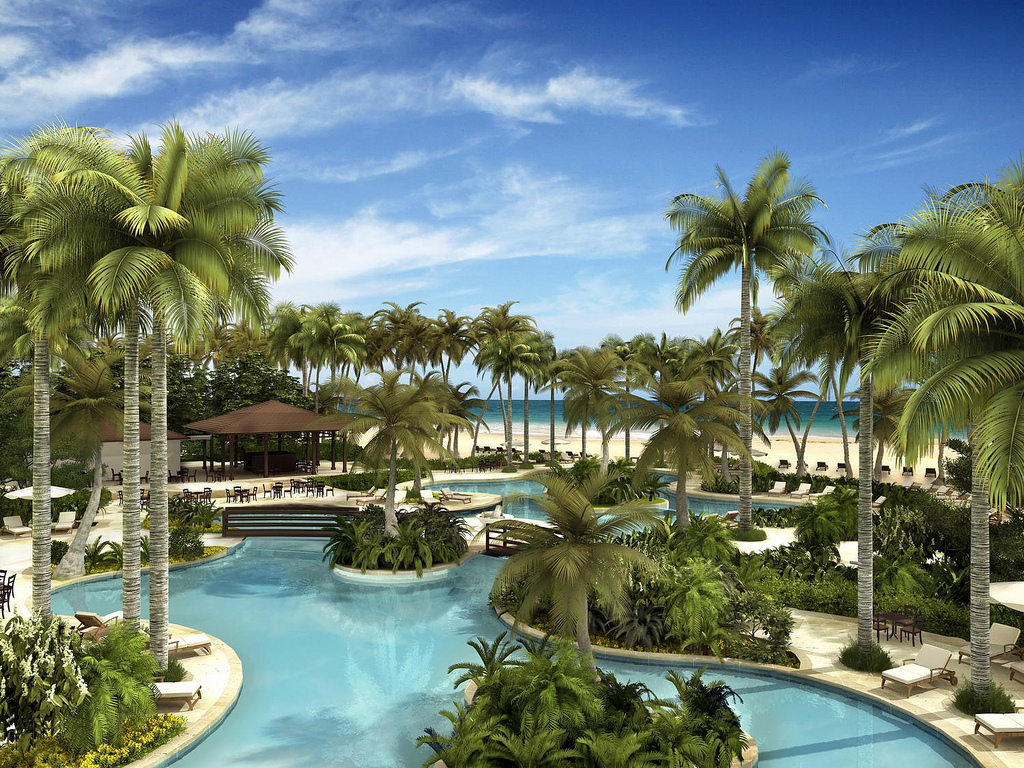 Facing calm, clear Caribbean waters, sheltered by mangrove forests, the southwest region is a haven for watersport enthusiasts or every ilk.
Facing calm, clear Caribbean waters, sheltered by mangrove forests, the southwest region is a haven for watersport enthusiasts or every ilk.
One of Puerto Rico’s great ecological treasures, La Parguera bioluminescent bay draws visitors to the captivating light displays at its (technically) two bio bays: Bahía la Parguera and Bahía Monsio Jose. As a result of overdevelopment and pollution, the bio bays here pale in comparison to the brightness of Vieques (six times brighter by some estimates) and Laguna Grande (Fajardo).
La Parguera still provides a rewarding experience and offers several advantages over its peers. It’s cheaper, receives less visitors and it’s the only bay where you enjoy nocturnal swimming. You can also combine a trip with exceptional snorkeling and diving. Most tours in La Parguera allow 40 minutes to swim in the bay. While we recommend that you take a guided tour with a licensed tour company, a handful of boat operators at the docks will negotiate a rate to take you out in the bay; around $15 per person.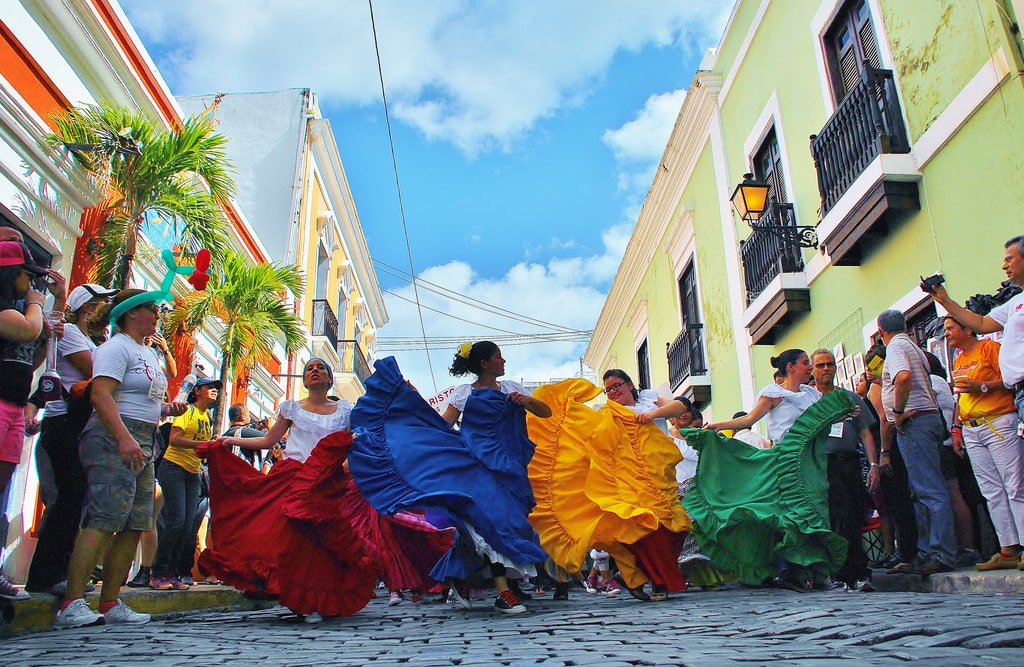
Getting to La Parguera
The fastest route from San Juan takes just over two hours, via Expressway PR-52 and then PR-304, which funnels to the seafront, the hub of tourist activity. There are three flights daily from San Juan (SJU) to Mayagüez Airport (MAZ) which is 32.5km (20 miles) from La Parguera. One-way Cape Air flights cost from $40.
Recommended Tour Operators
Paradise Scuba Snorkeling
Paradise’s most popular option is the combined snorkeling and bio bay tour led by guides from the Professional Association of Diving Instructors (PADI): 4-hour tours depart at 4pm (price $85). If you just want to snorkel in the bio bay (45 minutes), tours depart at 6pm and 9pm (price $55).
Bio Bay Parguera
This highly rated, family-owned tour company offers several bio bay tour options; standard kayak tours of the bay leave at 6:30pm and 9pm (price $62). The sunset swim tour at 4pm includes excellent snorkeling at the reef.
Fondo de Cristal
The 150-passenger Fondo de Cristal operates glass-bottomed catamaran tours where you experience the dinoflagellates light up around the boat and through the glass bottom viewing areas. 50-minute tours depart from Esperanza’s marina nightly at 7:30pm, 8:30pm, 9:30pm and 10:30pm (price from $10).
50-minute tours depart from Esperanza’s marina nightly at 7:30pm, 8:30pm, 9:30pm and 10:30pm (price from $10).
Laguna Grande, Fajardo
Less than an hour’s drive from San Juan, on the Northeast Coast, Laguna Grande is the most accessible bioluminescent bay in Puerto Rico. Fajardo is the second brightest bay of the trio, although light pollution from nearby towns is still very much present. What sets Laguna Grande apart is that the bio bay is actually a lagoon, nestled within an area of spectacular natural beauty. The lagoon forms part of Las Cabezas de San Juan Nature Reserve, one of the most gorgeous and ecologically important areas in Puerto Rico—seven eco-zones thrive within a compact area. The ability to visit the bio bay on a day trip from San Juan is a huge part of the appeal. As such, you should expect large numbers of visitors, especially on the weekend and holidays.
Part of the experience is the journey to the lagoon. Kayaks launch from a concealed opening in the mangroves at the northern end of the beach then navigate a mile-long channel. The dinoflagellates put on their ethereal light show as they feast off the red mangroves that surround the water.
The dinoflagellates put on their ethereal light show as they feast off the red mangroves that surround the water.
Getting to Fajardo
If you’re driving from San Juan, head east along the Rte. 66 Corridor Noreste highway and then follow Rte. 3 toward Fajardo—you’ll find a surfeit of tasty local restaurants and kiosks along the route. Fajardo and the Northeast Coast are the epicenter of many of Puerto Rico’s bucket-list attractions; El Yunque National Forest is just a short drive away.
Recommended Tour Operators
Kayaking Puerto Rico
This innovative adventure company specializes in eco-friendly bioluminescent bay excursions along Puerto Rico’s Northeast Coast. Two-hour bio bay tours depart from Las Croabas at 6:15pm and 8:30pm daily (price $55). Travelers short on time can combine a guided hike of El Yunque with an evening bio bay tour (price $149), including transportation from San Juan, a stop in Luquillo and dinner at a local restaurant.
Ecoadventures
Daily two-hour tours depart from Las Croabas at 6:15pm and 8:15pm (price $48). Following a short briefing on how to kayak and minimize your environmental footprint, you’ll navigate the mangrove channels that lead to the lagoon. Knowledgeable guides provide insight into the unique flora, fauna and sea life that inhabit this magical ecosystem.
Following a short briefing on how to kayak and minimize your environmental footprint, you’ll navigate the mangrove channels that lead to the lagoon. Knowledgeable guides provide insight into the unique flora, fauna and sea life that inhabit this magical ecosystem.
Island Kayaking Adventures
Night kayak paddling tours into Laguna Grande (price $53) depart Monday to Saturday at 6pm or 8pm (Oct–Feb), 6:30pm or 8:30pm (Mar-Sept).
Las Tortugas Adventures
Highly rated tours are run by experienced guide Gary Horne, certified dive master and Coast Guard veteran. Two nightly tours of the bay, at 6pm and 8pm, cost $55 per person, or $75 including round-trip transportation from San Juan.
Tips for visitors
- Wear comfortable waterproof or (ideally) hybrid clothing and shoes that can get wet. Flip flops and slides work.
- Bring a towel and change of clothes for after the tour.
- To minimize environmental impact, avoid wearing sunscreen, lotion and insect repellant.

- Visiting a bio bay is a family friendly experience. Most tour operators specify a minimum age of 6 years old. Children under 13 must also be accompanied by an adult.
- It’s best to visit during a New Moon phase—on a dark and cloudy evening—when the bioluminescent glow is most pronounced.
- Bio bays are extremely hard to photograph. You’ll need to bring along a camera that has manual settings for ISO, shutter speed and aperture, and ensure the flash is turned off.
That is why heated metal c a n glow red o r e ven white. macbook-covers.net macbook-covers.net | That is why hot metal a mo f no glow red or 9white macbook-covers.net macbook-covers.net |
In the tropical Atlantic, in areas such as Bahia [. Fosforescente in Puerto Rico and Oyster […] are a major tourist attraction. unesdoc.unesco.org unesdoc.unesco.org | In the tropical part of the Atlantic, in such […] regions like Bahia Phosphorescente in […] Pyrodinium bloom attracts […] great attention of tourists. unesdoc.unesco.org unesdoc.unesco.org |
Thus, the sun suffered a total [. eclipse and most of the sky […] sunnyokanagan.com sunnyokanagan.com | Thus the sun endured a total eclipse and a great […] part of the sky seemed to be […] sunnyokanagan.com sunnyokanagan.com |
The transparent crystal […] to reveal us who he is […] who is sitting on the throne: The Holy One is love. waters-of-life.net waters-of-life.net | Crystal clear b e or z a and blood red c and , framed in emerald […] halo, tell us who […] is He who sits on the throne: The holy God is love. waters-of-life.net waters-of-life.net |
In this regard, we […] Miguel d’Escoto Brockmann for the report of the Open-ended Working […] Group on the Question of Equitable Representation on and Increase in the Membership of the Security Council and Other Matters related to the Security Council, contained in document A/63/47. daccess-ods.un.org daccess-ods.un.org | In this connection […] Mr. Miguel d’Escoto Brockmann for the report of the Open Working Group […] on the question of equitable representation on and expansion of the membership of the Security Council and other matters relating to the Security Council, contained in document A/63/47. daccess-ods.un.org daccess-ods.un.org |
While the authorities are probably resigned to a string of critical articles in the Western […] press, they feel confident that they can present the meeting […] economic policies. crisisgroup.org crisisgroup.org | Although the authorities may be ready for critical articles to appear in […] Western press, they are sure at home […] economic policy of Uzbekistan. crisisgroup.org crisisgroup.org |
Stakeholder comments on IOC […] unesdoc.unesco.org unesdoc.unesco.org | Comments of interested institutions and persons regarding […] unesdoc.unesco.org unesdoc.unesco.org |
Norway’s Minister of Culture Trond Giske rated this performance the most important cultural event in Norway in 2009 and Morgenbladet, one of Norway’s most respected […] newspapers, wrote that “These […] challenge for any of the neighboring orchestras. mariinsky.ru mariinsky.ru | Norwegian Minister of Culture Trond Giske called this performance the most significant event in the cultural life of the country in 2009year, and one of the most influential […] Norwegian newspaper “Morgenbladet” […] can successfully compete […] with any Northern European orchestra.” mariinsky.ru mariinsky.ru |
I would like to p a y Antonio Maria Costa for his unfailing self-sacrifice to a cause that he has always and everywhere defended. daccess-ods.un.org daccess-ods.un.org | I would like to thank Mr. Antonio Maria Costa from the bottom of my heart for his unwavering and selfless dedication to the cause he stands for always and everywhere. daccess-ods.un.org daccess-ods.un.org |
The range of colors in the two ARTISTRY Fall 2012 Color Collection compacts lend themselves to […] winter sunlight, featuring metallic shades of lavender and [. amway.ua amway.ua | Palettes from the ARTISTRY Fall 2012 Decorative Collection in two compact cases capture the rays of the winter sun, […] embodied in metallic shades […] luscious lip gloss. amway.ua amway.ua |
Under article 13 of the Act, violations of the procedure in question comprise the […] superficial and biased consideration of issues […] ethical standards in relations with […] applicants, unjustified refusal to consider complaints, and prosecution of a citizen in connection with a complaint involving persons bearing disciplinary, administrative, material or criminal liability. daccess-ods.un.org daccess-ods.un.org | According to article 13 of the Law for violation of the procedure for considering citizens’ applications, […] superficial and biased […] violation of ethical standards in relationships […] with applicants, unreasonable refusal to resolve appeals, as well as the persecution of citizens in connection with the filing of appeals, guilty persons bear disciplinary, administrative, property or criminal liability. daccess-ods.un.org daccess-ods.un.org |
Efforts have also focused on the popularization of science and […] technology in Latin America and the […] dissemination of interactive virtual […] education programs in the region. unesdoc.unesco.org unesdoc.unesco.org | In addition, efforts were focused on […] promotion of science and technology in Latin […] and thanks to the spread of interactive [. virtual educational programs in this region. unesdoc.unesco.org unesdoc.unesco.org |
In the framework of the Interreligious Dialogue Program, a special course entitled “Religion and Media” attended by journalists and international civil servants, […] among others, from the United […] inaugurated at the University of […] Geneva (History of Religions Department). unesdoc.unesco.org unesdoc.unesco.org | Within the framework of the Interreligious Dialogue Program at the University of Geneva (Department of the History of Religions), special courses on “Religion and the Media” were organized, in which [. participation of journalists and international […] Nations and International Red […] Cross, as well as diplomats. unesdoc.unesco.org unesdoc.unesco.org |
For the last fill of the firebox we recommend using small […] narvi.fi narvi.fi | At the end, the smallest firewood is placed in the heater, […] narvi.fi narvi.fi |
Design of […] foxaza.com foxaza.com | Helicopter design complement yu t luminous la mp goggles. foxaza.com foxaza.com |
But in retrospect, Kohut felt uneasy about the termination phase, since it seemed to him emotionally shallow compared to the earlier part of the analysis when the patient talke0008 t e rm s about the idealization of the preoedipal mother and his admiration for the camp counselor. hgp-piee.org hgp-piee.org | However, looking back, Kohut was somewhat uneasy about the final phase. hgp-piee.org hgp-piee.org |
This 30 minute spray tan will […] you look and feel fantastic. atlantisthepalm.com atlantisthepalm.com | This aerosol […] 30 minute tan […] how you will look and feel […] yourself fantastic. ru.atlantisthepalm.com ru.atlantisthepalm.com |
But t h e glowing , of not being utterly helpless. lastrada.md lastrada.md | But the shining thought of Thu o next to e st – someone reaching out, guiding and caring, gives the caller the feeling that he is not alone, that there is still hope for help. lastrada.md lastrada.md |
It was incredibly well-received at […] both the audiophile press and gadget and technology fans. bowers-wilkins.net bowers-wilkins.net | Their production was exclusively […] both in the music press and among gadget and technology lovers. bowers-wilkins. bowers-wilkins.ru |
When cutting st ee l : glowing m e ta l particles may cause fires! 9 Users who use the machine periodically or for long periods or users who repeatedly experience corresponding symptoms (e.g., tingling sensation in fingers), should undergo a medical examination. static.stihl.com static.stihl.com | In the event of regular, prolonged use of the power tool and the recurrence of related symptoms (e.g. itchy fingers), a regular medical examination is recommended. static.stihl.com static.stihl.com |
When the battery has been sufficiently […] bmwicom.net bmwicom.net | If the battery is loaded [. bmwicom.net bmwicom.net |
Just as white light contains every color of the spect en m Man glow in the fullness of His holiness. waters-of-life.net waters-of-life.net | Just as the white color contains all other colors and shines more expressively than all other colors and colors, so the head of the Son of Man shone with the fullness of His glory. waters-of-life.net waters-of-life.net |
This 1 hour or 1 hour 15 minute treatment is for brighter, clearer and radia atlantisthepalm.com atlantisthepalm.com | This 1 hour or 1 hour 15 minute treatment is designed to create a brighter, clearer and with radiant skin. en.atlantisthepalm.com en.atlantisthepalm.com |
Thus perhaps a meteor shower of gold […] sunnyokanagan.com sunnyokanagan.com | Meteor shower thus possible bearing […] sunnyokanagan.com sunnyokanagan.com |
The artist captured different names of Allah through a series composition with a touch of […] sokolniki.com sokolniki. | The artist captured the various names of Allah in a series of compositions, with a “shade” […] sokolniki.com sokolniki.com |
Herby […] Conference was an opportunity to follow up on the […] efforts begun by the international community more than seven years previously to end the suffering caused by explosive remnants of war, which had culminated in the adoption in November 2003 of Protocol V. Currently binding on 35 States parties, the Protocol strengthened the Convention: it was no doubt the most ambitious project planned to date by the States parties to the Convention. daccess-ods.un.org daccess-ods.un.org | Mr. HERBY […] The conference provides an opportunity to continue efforts from […] to end the suffering from explosive remnants of war initiated by the international community over seven years ago, which culminated in the adoption of Protocol V in November 2003. Now binding on 35 States Parties, this Protocol strengthens the Convention, and indeed, to this day, it seems to be the largest project undertaken by States Parties to the Convention. daccess-ods.un.org daccess-ods.un.org |
Furthermore, the sensors must not be in direct line of sight of the […] rear part of the combustion [. affecting the values measured by the thermostats. antti-teollisuus.fi antti-teollisuus.fi | In addition, the sensors must not […] “see” the back of the furnace, […] incorrect values. antti-teollisuus.fi antti-teollisuus.fi |
It has been shown that […] lighting.philips.co.jp lighting.philips.co.jp | Practice has shown [. |
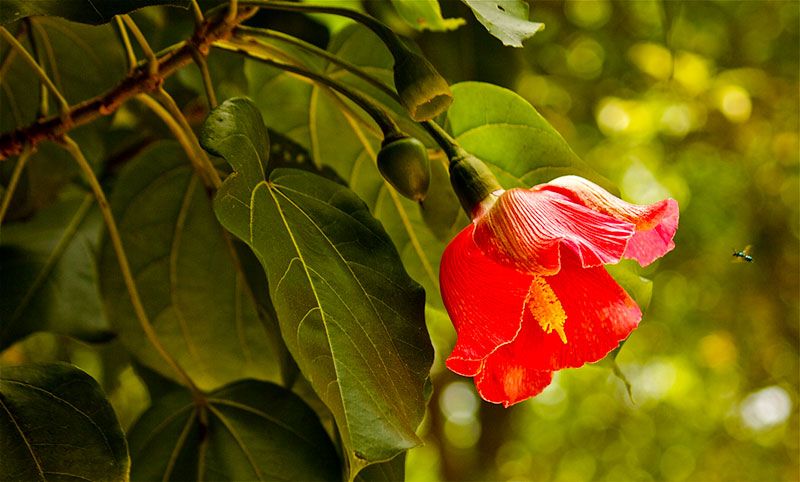
 ..]
..] ..]
..] ..]
..]
 ..]
..]
 ..]
..] ..]
..]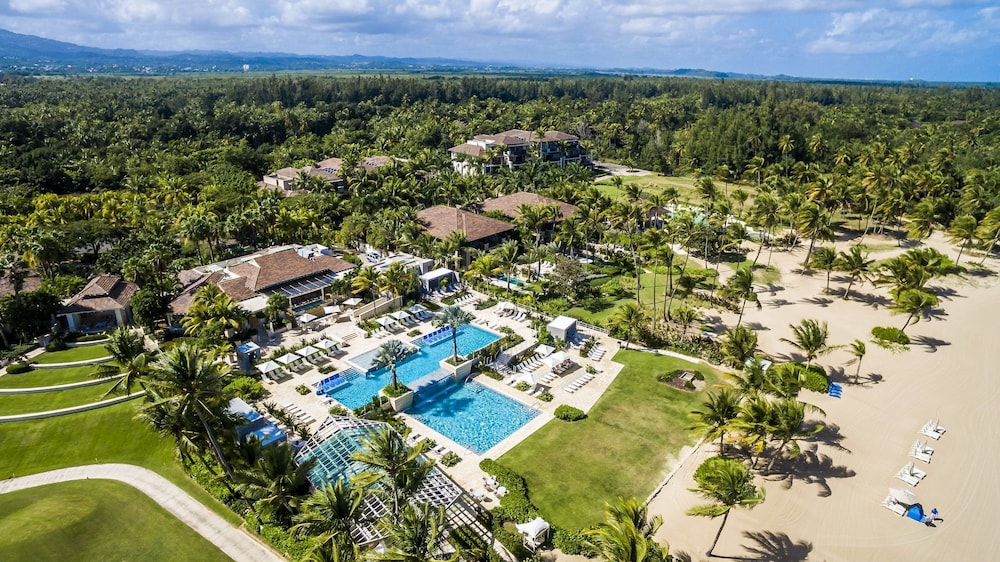 ..]
..]
 ..]
..]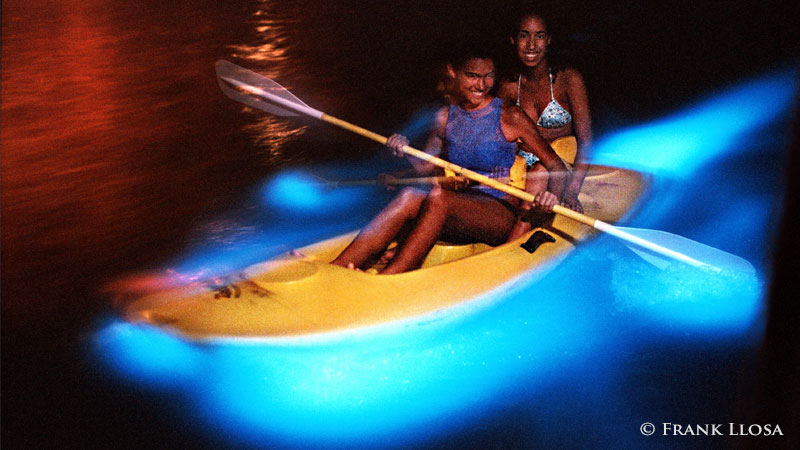 ..]
..]
 She seemed to him emotionally superficial compared to the previous part of the analysis, when the patient spoke passionately about the idealized pre-oedipal mother and his admiration for the teacher.
She seemed to him emotionally superficial compared to the previous part of the analysis, when the patient spoke passionately about the idealized pre-oedipal mother and his admiration for the teacher.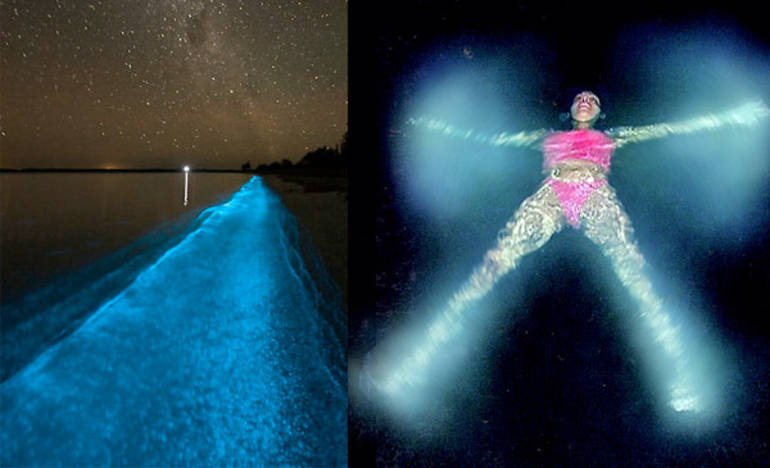
 ru
ru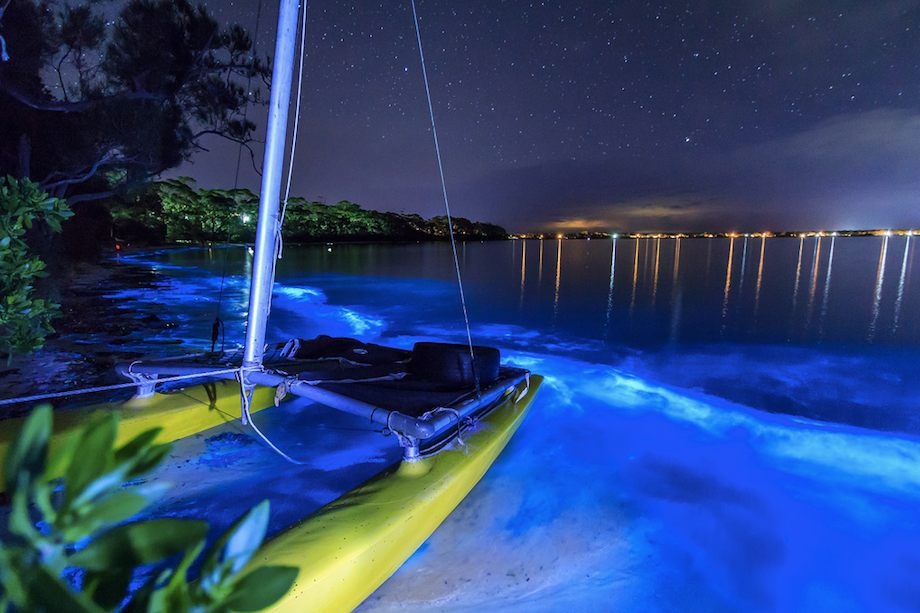 ..]
..]
 com
com
 ..]
..]